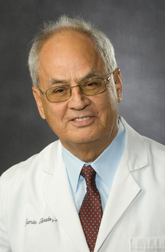Day :
- Cancer Therapies | Oncology | Radiation Oncology | Cancer Diagnostics Types | Cancer Innovations | Approaches in Cancer Therapy
Location: Diplomat

Chair
Jaime Tisnado
Virginia Commonwealth University, USA

Co-Chair
Adhip P N Majumdar
Wayne State University, USA
Session Introduction
Jaime Tisnado
Virginia Commonwealth University, USA
Title: Carotid blow out syndrome: Interventional radiologic management

Biography:
Abstract:
Adhip P N Majumdar
Wayne State University, USA
Title: Gut microbiome regulation of cancer stem cells and colon carcinogenesis

Biography:
Abstract:
Junliang Liu
University of Manitoba, Canada
Title: Brain metastases: Post-whole brain radiotherapy systemic treatment increases survival

Biography:
Abstract:

Biography:
Abstract:
Oleg V. Gerasimenko
Cardiff University, UK
Title: Potential protection from the side effects of antileukemic drug asparaginase

Biography:
Abstract:
Omnia Abd El-Fattah
Tanta University Hospital, Egypt
Title: Quality-of-life scores in locally advanced laryngeal carcinoma patients as a predictive value and impact on survival

Biography:
Abstract:
- Clinical Oncology | Chemotherapy | Cancer Screening Tests
Location: Diplomat

Chair
Myron R Szewczuk
Queen’s University, Canada

Co-Chair
Hanso Lee
Kanwon National University, South Korea
Session Introduction
Omnia Abd El-Fattah
Tanta University Hospital, Egypt
Title: Predictive value of PKM2 expression in advanced Non-Small Cell Lung Cancer patients (NSCLC) treated with front-line platinum-based chemotherapy

Biography:
Abstract:
Adhip P N Majumdar
Wayne State University, USA
Title: micoRNAs in regulation of cancer stem cells and colon carcinogenesis

Biography:
Abstract:
Fikri Selcuk Simsek
Firat University, Turkey
Title: Can we use more accurate parameters than SUVmax in mediastinal nodal staging in NSCLC

Biography:
Fikri Selcuk Simsek graduated from EskiÅŸehir Osmangazi University Medicine faculty. He completed his Master’s from EskiÅŸehir Osmangazi University Medicine faculty (2005) and Doctorate from Eskisehir Osmangazi University Medicine faculty (2011). Presently, he is working as Assistant Professor in Nuclear Medicine Department at the Firat University.
Abstract:
Rui Hou
Chinese Acadamy of Medical Science, China
Title: Animal and cellular models of hepatocellular carcinoma bone metastasis: Establishment and characterisation

Biography:
Abstract:
Manar Atoum
Hashemite university, Jordan
Title: Polymorphisms of leptin (-2548 G/A) and leptin receptor (Q223R) genes among jordanian breast cancer females

